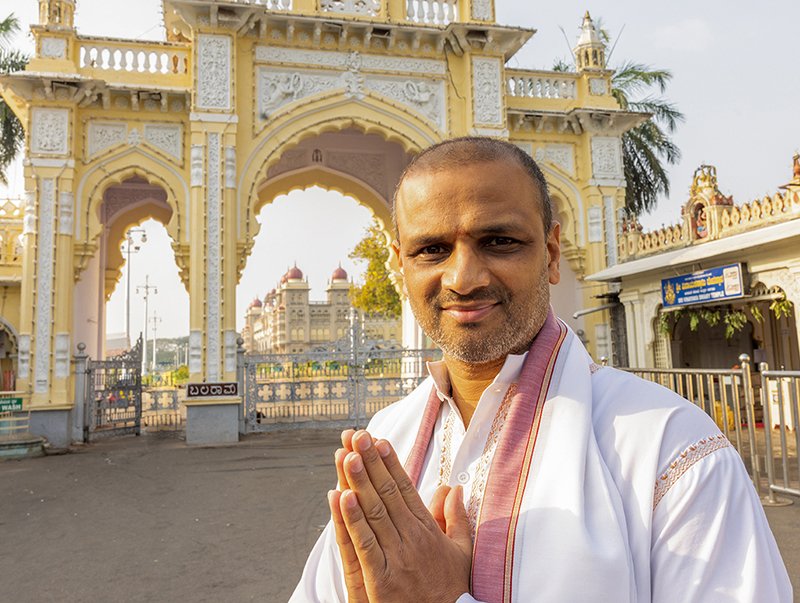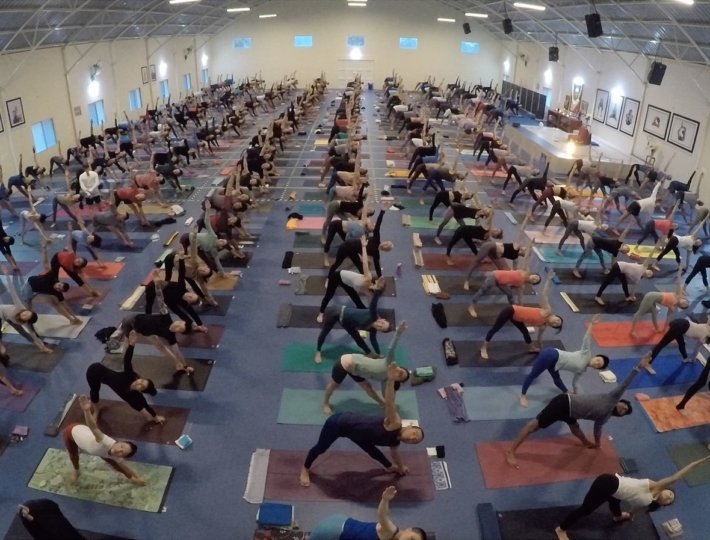Over the last few years, I’ve read a hundred different reasons why I should adopt a regular meditation practice.
It’s the best way to harness the power of the present moment. It’s a tool for self-healing. It provides direct access to the divine.
The list goes on. My problem was that while I did recognize these almighty truths right from the start, I also found myself seriously stuck when it came to actually meditating.
My favorite spiritual writers sure made it sound easy—just sit down, quiet your mind, and be. In practice, this was a daunting, nearly impossible task. All the while, I talked nonstop about the power of awareness in the present moment. It wasn’t until I came across this quote by Marianne Williamson a few months back that I felt nudged to make a change.
“It’s not enough just to know how important healthy food and exercise are; we must actually eat well and exercise regularly to enjoy the benefits of those habits. So, it’s not enough to just know the power of prayer and/or meditation; we must practice these rituals, through daily devotion.”
It was then that I took a hard look at the reasons why I wasn’t meditating and made changes to get over them. Since shifting my outlook, I’m finally enjoying all the transformative benefits of meditation. When I’ve been loyal to my practice, I feel more grounded, more focused. Anxiety and worry are transmuted into trust and acceptance of what is. For a few minutes each day, I feel deeply connected to something holy and real and magical.
Here are three key ideas that helped me develop a regular practice and unlock the benefits I had been touting for so long.
1. I Realized Short Meditation Sessions Are Worthwhile
My biggest hurdle used to be that I simply didn’t have time to meditate. Juggling work demands while caring for two young children often left little time for much else. Then I came across a radical idea from writer Peter McWilliams: Meditating often creates more time than it takes. I interpreted this to mean that meditation calms the mind in such a way that you actually feel less crazed and time-starved than before.
For me, this was an entirely new idea. Like most people, I’d been conditioned that doing is far more productive than being. Not the other way around.
“That’s kind of counterintuitive because people think that in order for us to be effective, we have to be physically busy all the time,” says Charles A. Francis, cofounder and director of the Mindfulness Meditation Institute, and author of Mindfulness Meditation Made Simple: Your Guide to Finding True Inner Peace. “In the back of our mind when we’re meditating, we’ve got our mind telling us we’re wasting time. It can be kind of hard to get over that.”
The idea that I didn’t have to spend hours zenning out each day to enjoy the magic of meditation was really liberating for me. This translated to 10 minutes of meditation in the morning and 10 minutes at night—that’s it. Francis says that starting out with even five minutes every day or two is a great place to begin.
“Start off with what’s realistic for you because if you’re too ambitious and you don’t meet that goal, then you’re going to get discouraged and beat yourself up,” he says. “Then you start feeling guilty.”
Self-forgiveness is key here. While my old M.O. was to get angry with myself for not meditating long enough, my new outlook granted me a permission slip saying that a 10-minute meditation was just fine. More than fine, actually.
2. I Relabeled What I Was Doing
The term “meditation” carries a lot of weight. It conjures images of yogi masters and the Dalai Lama, which can be intimidating in and of itself. Reframing the whole thing helped me feel much more confident.
Today, I don’t “meditate.” I simply make time in my life for daily moments of stillness and peace. That’s all.
“Meditation, in the simplest form, is just sitting quietly and giving our mind a rest,” says Francis. “Just as an athlete trains the body, a meditator trains the mind.”
Chances are, you already meditate and aren’t even aware of it. My husband, a marathon runner, swears up and down that meditating isn’t his thing. But when I ask why he loves running, his answer is that it gives his mind a break. The rhythm of his feet hitting the pavement, his breath going in and out, the natural beauty he observes during a good run—all of it works in tandem to silence his thoughts and allow him to just be.
For my husband, running is a form of meditation.
Related: Can Running Really Be a Form of Meditation?
I have no intentions of attempting a marathon, so I’m more of a traditional-meditation type. (Legs crossed, eyes closed, silence.) But on more than one occasion, I’ve talked with people who associate this image with one religion or another. This misguided idea is enough to spook a lot of people away.
“There’s no doctrine to accept and no philosophy,” says Francis, who has meditated with Jews, Christians, Muslims, and more. “No matter what our spiritual tradition may be, it doesn’t conflict with it. It’s fully compatible.”
For me, diving head first into the divine space between my thoughts is the closest I ever feel to God.
3. I Discovered That Thoughts Are Not the Enemy
Keeping your racing mind in check is a key part of meditation. For some, myself included, wrangling runaway thoughts can be a serious hurdle.
The point of meditation, however, isn’t to defeat your thoughts, which is a huge misconception. Even the term “defeat” implies opposition. Resistance. As if you can win or lose at meditation. Instead, try surrendering to the experience fully.
Mindfulness meditation teaches us to simply allow thoughts to be present without fighting or following them. Acknowledge your thoughts as they arise. Say hello to them, even. Then watch, like magic, as they dissipate on their own. This simple act will automatically re-center you.
“Don’t expect your mind to stop as soon as you start meditating because that’s completely unrealistic no matter who you are or how much practice you have,” Francis says. “The mind is going to wander off within three seconds, but the idea is to keep bringing it back.”
While I bring it back through nonresistance, Francis’s approach is to first let go of all tension in the body before concentrating intensely on his breath or other focal point. Whenever thoughts arise, he advises bringing your attention back to whatever point of focus you’ve chosen.
“Anchor your attention on that because our mind just bounces all over the place when we first start our meditation,” he adds. “When we get distracted, we immediately yank our attention back; there’s nothing gentle about it.”
Grasping that sweet spot where your mind is empty of thought and all that’s left is pure awareness—even if just for a few fleeting seconds at a time—is what meditation is all about.









Comments (1)